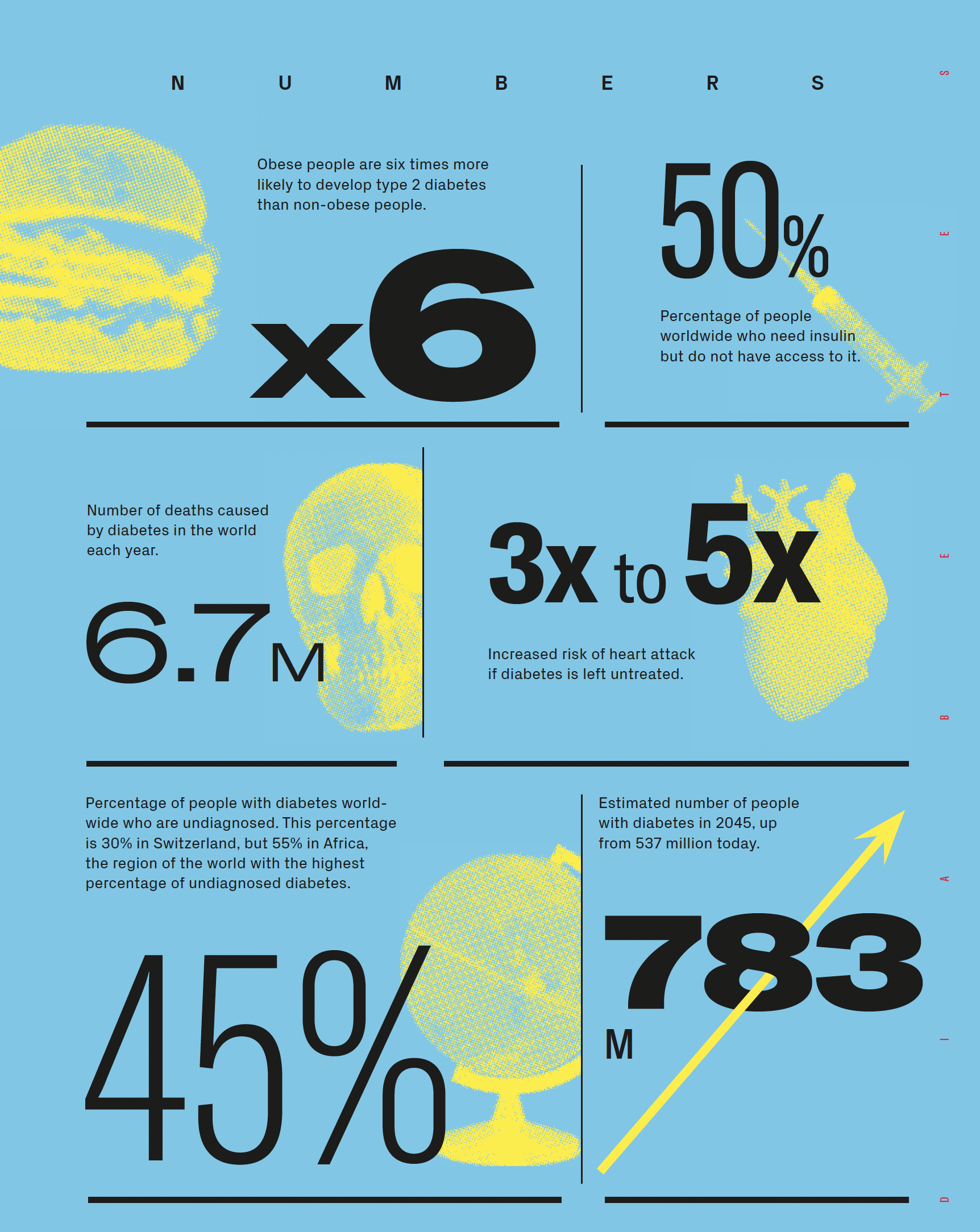
Diabetes, the worldwide plague
that pays off big time
Driven by higher patient numbers, the global diabetes market, currently valued at $120 billion, is expected to reach nearly $320 billion by 2030.
By Bertrand Beauté
For investors, diabetes care is a very attractive sector," says Marina Record, investment manager in the Health Innovation team at Baillie Gifford. "It’s a huge, growing market, that is currently undergoing significant change." The figures are eye-popping. The International Diabetes Federation (IDF) estimates that the number of people with diabetes worldwide has increased five times over in four decades, from 108 million in 1980 to 537 million in 2021. And this staggering increase is not over. If left without the appropriate treatment, the disease can cause serious complications (heart, kidney and eye conditions) and is predicted to affect 643 million people in 2030 and 783 million by 2045.
"The world, including Switzerland, is facing a diabetes epidemic," says Dr Karim Gariani, head of the diabetology unit at the University Hospitals of Geneva (HUG). "The prevalence of this disease is increasing everywhere." Characterised by a chronic excess of sugar in the blood (hyperglycaemia), diabetes exists in two main forms. Type 2, which accounts for 90% of cases, is the form that is increasing the most, because onset is driven by excess weight and a sedentary lifestyle. Obese people are six times more likely to develop type 2 diabetes than non-obese people. "To avoid developing type 2 diabetes, you should eat a balanced diet, keep your body mass index (BMI) below 25 and get regular exercise," Dr Gariani says. "Unfortunately, today’s sedentary society is not conducive to this lifestyle, and the prevalence of type 2 diabetes just keeps growing."
However, for type 1 diabetes, an autoimmune disorder, no preventive measures can be taken. Its causes remain largely unknown, but onset can be sudden, generally before age 20. The number of people with type 1 diabetes is also increasing, but at a slower rate than type 2, around 3% to 4% per year.
"It is very exciting to see how these innovations will change management of the disease"
Marina Record, investment manager at Baillie Gifford
"Whatever its type, diabetes is chronic. Patients have to take medication for the rest of their lives," says Arelis Agosto, senior healthcare analyst at Global X ETFs in New York. "In the United States, for example, diabetics spend an average of $12,000 a year on their care." As a whole, the global diabetes market is currently worth $118 billion a year. Allied Market Research estimates it will reach $317.9 billion by 2030, which comes out to annual growth of more than 10%.
"Growth in the global market stems from the higher number of patients, as well as innovations that will increase the price of treatments," says Pierre Corby, healthcare equity specialist at Union Bancaire Privée (UBP). "New treatments and devices have been launched on the market in recent years. They are expected to generate significant revenues in the future." Experts agree that two major revolutions are currently disrupting diabetes management: digital care, mainly for type 1 patients, and the emergence of new classes of drugs for type 2 patients. "A lot of changes are happening," says Marina Record. "It is very exciting to see how these innovations will change management of the disease."

